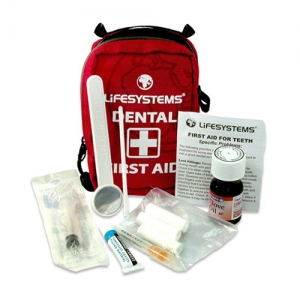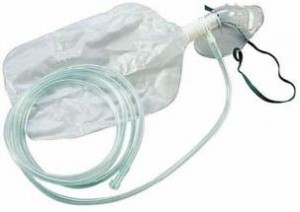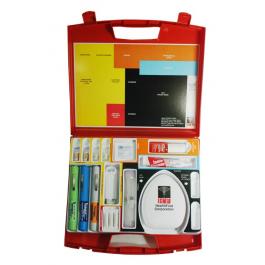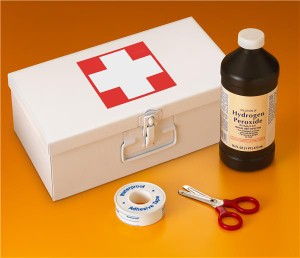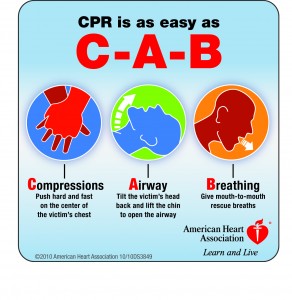In the case of a medical emergency in the dental office, it is essential that all members of the dental team are competent in basic life support while waiting for emergency crews to arrive. An emergency supply kit of drugs must be available in every dental office and should contain only a limited number of drugs with which the dental practitioner is familiar. Inappropriate use could worsen the patient’s condition. A medical emergency kit could be useful in a patient, staff or visitor medical crisis; or following a natural or man-made disaster.
Every dental practice should possess apparatus for delivering oxygen or at least air. In addition, the facility to deliver nitrous oxide and oxygen mixture, for example via an anesthetic or relative analgesia machine, can be invaluable.
The following should be readily available:
- Oral airway, preferably with a bag system, for example ambu-bag.
- High-vacuum suction.
- Disposable syringes, needles and a tourniquet. Butterfly needles and intravenous (IV) canulae are great assets to those familiar with their use.
- Alcohol wipes.
List of drug items recommended for a typical emergency medical supply kit
- Adrenaline injection, 1:1000 solution (1mg adrenaline in 1ml saline)
- Aspirin dispersible tablets 300mg
- Chlorphenamine 10mg/ml injection
- Flumazenil 100ug/ml 5ml ampoule
- Glucose, as dextrose 20% or 50% solution and an oral glucose solution.
- Glucose intravenous infusion 50ml prefilled syringes
- Glucagon 1mg injection
- Glyceryl trinitrate tablets and sprays
- Hydrocortisone (as sodium succinate or sodium phosphate)(100mg and water for injection).
- Midazolam (5mg/ml 2ml ampoules)
- Oxygen
- Salbutamol aerosol inhalation
- Salbutamol 0.5mg/ml injection
The emergency supply list above is a minimum for any dental professional performing invasive treatment. Ideally, all public areas, let alone dental practices, should have access to an automatic defibrillator as this is the most valuable single piece of equipment in a heart attack or cardiac arrest.
A practice that chooses to have an emergency kit with prescription drugs in it needs to be sure that the drugs:
1)Â Â Â Â Â are stored appropriately
2)Â Â Â Â Â have not passed the expiry date
3)Â Â Â Â Â usage is within the training of the dentist, and
4)Â Â Â Â Â usage is correct for typical situations facing the dentist.
Dentists should check with their state dental association, a competent legal advisor or with their personal professional liability insurance carrier for information about specific state requirements and recommendations that may apply.
List of emergency supplies of non-drug items recommended for a typical emergency kit
- Sterile adhesive bandages in assorted sizes
- Assorted sizes of safety pins
- Cleansing agent/soap
- Latex gloves (2 pairs)
- 2-inch sterile gauze pads (4-6)
- 4-inch sterile gauze pads (4-6)
- Triangular bandages (3)
- 2-inch sterile roller bandages (3 rolls)
- 3-inch sterile roller bandages (3 rolls)
- Scissors
- Tweezers
- Suture
- Paper towelettes
- Antiseptic
- Thermometer
- Tongue blades (2)
- Tube of petroleum jelly or other lubricant
It is wise to consider adding a battery-operated radio and flashlight to the kit in case there is a power failure. Always test all batteries monthly or in accordance with recommendations from the manufacturer. Moreover, having a cellular telephone available could come in handy if there is trouble with surface telephone lines during an emergency.
In medical emergencies, the dental team should be prepared to take the vital signs of blood pressure, pulse, respiratory rate and temperature. Such information could be valuable in reporting the status of the injured person. The dental practitioner should administer basic life support and maintain an open airway while providing, if necessary, oxygen using a device for its delivery under positive pressure. In other instances, an external cardiac compression or a “Heimlich maneuver” might be necessary.
Dental practitioners should become familiar with the prevention, diagnosis, and treatment of common emergencies that they might encounter during routine care with some individuals through continuous education. Furthermore they should provide appropriate training to their staff so that in these situations each staff person knows their responsibility and can act promptly.
In any case, members of the dental team who are expected to administer cardiopulmonary resuscitation (CPR) as part of their job duties should have appropriate training using ventilation devices located where they can be quickly retrieved. Trainings in basic first aid and in CPR are offered by the American Red Cross.
How to report an emergency
- call the emergency number for your area
- calmly explain the nature of the emergency
- give the location (provide directions, if necessary)
- supply the name, age of the victims
- give your own name, address & telephone number (optional, but useful to investigators)
